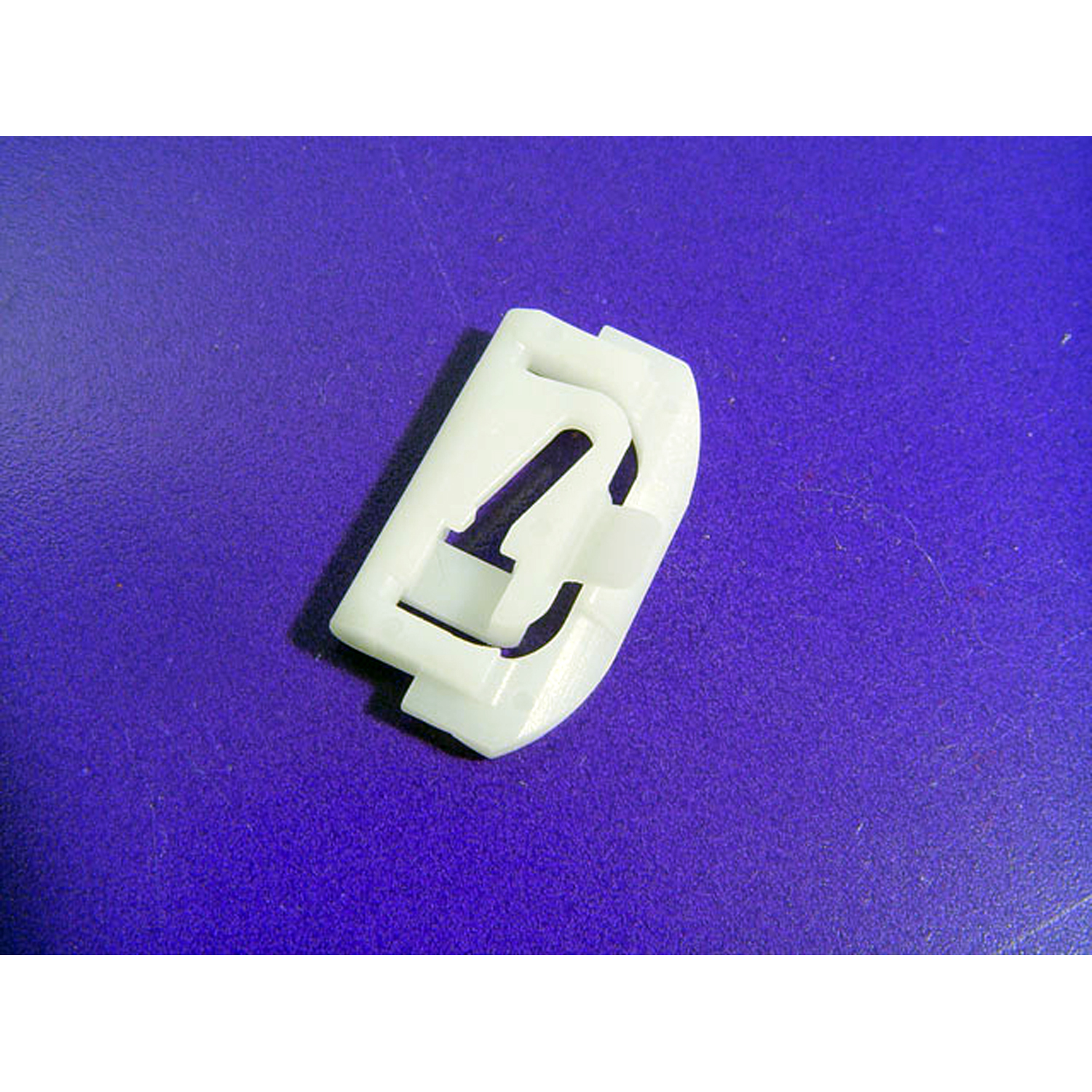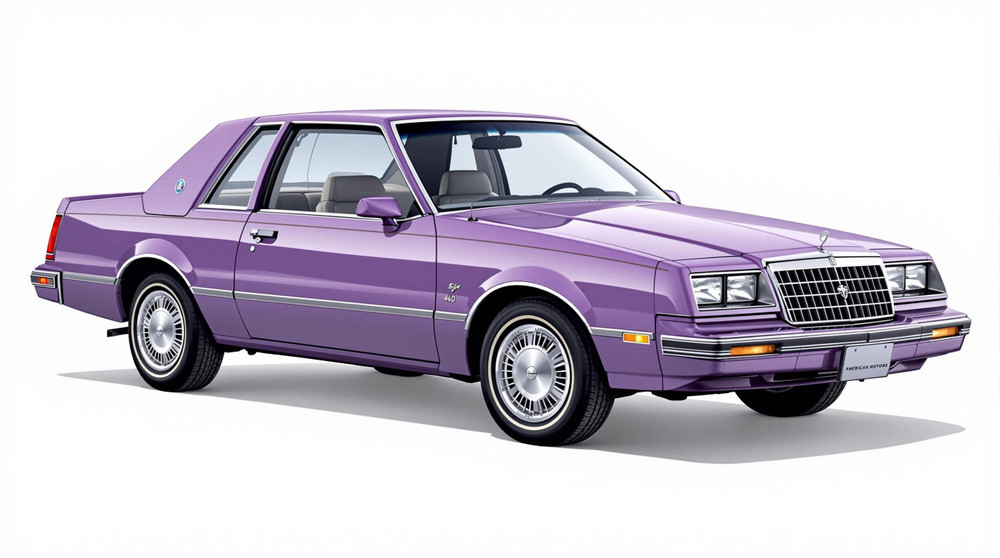Image of 1984 American Motors Eagle, Note: These illustrations use artistic license and may differ from actual historical models.
Performance Metrics
Fundamental Metrics
Emotional Appeal
MMP Rating
| Engine Specifications | |
|---|---|
| Engine: | 2.5L I4, 4.2L I6 |
| Displacement: | 150-258 cu in |
| Horsepower: | 85-114 hp |
| Torque: | 125-210 lb-ft |
| Compression Ratio: | 8.2:1 (I4), 8.5:1 (I6) |
| Ignition System: | Electronic |
| Cooling System: | Liquid-cooled |
| Performance Specifications | |
| 0-60 Time: | 15-20 seconds |
| 1/4 Mile Time: | 18-22 seconds |
| Top Speed: | 100 mph |
| Transmission and Drive | |
| Drive Type: | 4WD |
| Transmission Type: | 4-speed manual, 3-speed automatic |
| Fuel and Efficiency | |
| Fuel System Type: | Carburetor |
| MPG: | 16-20 mpg |
| Dimensions and Brakes | |
| Brakes: | Front disc, rear drum |
| Wheelbase: | 109.3 in |
| Weight: | 3,300-3,600 lbs |
Note: Specifications for classic cars are given to the best of our ability, considering the limited and variant data available.
1984 American Motors Eagle: A Trailblazing Crossover Before Its Time
The 1984 American Motors Eagle stands as a testament to innovation, a vehicle that blurred the lines between station wagon and off-road warrior. Born from the forward-thinking minds at American Motors Corporation (AMC), the Eagle soared as an early crossover that combined the comfort of a passenger car with the rugged capability of a four-wheel-drive system. This unique blend of features carved out a new niche in the automotive market and left an indelible mark on the industry.
At its core, the AMC Eagle was a product of necessity, emerging during an era when fuel efficiency and versatility were becoming paramount. It was this vehicle that set the stage for the modern SUV and crossover segments, offering a glimpse into the future of family-friendly, all-terrain travel. One notable moment in its history was when it became known as one of the first true crossovers, effectively creating a new segment decades before it became mainstream.
Design and Innovation
The exterior of the 1984 AMC Eagle exuded a robust charm, with its raised ride height and pronounced wheel arches hinting at its off-road prowess. The design was utilitarian yet distinctive, featuring a long roofline and ample glass area for excellent visibility. Inside, passengers were greeted with a functional cabin that prioritized comfort and practicality. Materials were typical of the era, with options ranging from durable fabrics to plush vinyls.
Technologically, the Eagle was ahead of its time, boasting AMC's pioneering Select Drive four-wheel-drive system. This allowed drivers to engage four-wheel drive on-the-fly, providing confidence across various driving conditions. Color options for the Eagle ranged from conservative earth tones to more vibrant hues, with shades like Garnet Red and Deep Night Blue being popular among enthusiasts.
The Eagle came in several body styles including two-door liftback, four-door sedan, and wagon variants. The wagon, with its spacious cargo area and all-terrain readiness, became an iconic symbol of AMC's ingenuity.
Historical Significance
The AMC Eagle's impact on automotive design is undeniable. It bridged the gap between low-slung cars and high-riding SUVs, offering consumers a vehicle that could tackle snowy roads and muddy trails without sacrificing everyday usability. It set itself apart from contemporaries by offering all-season capability in an unassuming package—a concept that would later become commonplace in the automotive world.
Performance and Handling
Underneath its rugged exterior, the 1984 AMC Eagle was powered by an array of engines throughout its production run, with options including a 2.5-liter four-cylinder or a 4.2-liter inline-six engine. Performance figures weren't groundbreaking—the inline-six propelled the Eagle from 0-60 mph in around 12 seconds—but it wasn't about raw speed; it was about versatility. The handling was confident for its class, with long-travel suspension absorbing bumps commendably while maintaining composure on twisty sections.
Driving an Eagle was about experiencing utility in motion; the throaty hum of the six-cylinder engine provided an audible reminder of its capability while drivers enjoyed a commanding view of their surroundings.
Ownership Experience
The AMC Eagle found its niche as both a daily driver for families seeking safety in all weather conditions and as an adventurer's companion capable of light off-roading excursions. Maintenance was relatively straightforward by modern standards, though some parts have become rarer over time. Reliability was on par with other vehicles from the era—a mix of simple mechanicals but susceptibility to rust being one common issue.
Fun Facts
The AMC Eagle has had its share of limelight—appearing in television shows like "Breaking Bad" and even serving as an unexpected rally car in some enthusiast circles. While not known for setting speed records, it did set a precedent for what many consumers expect from their vehicles today: versatility and all-weather capability.
Critics often pointed out its modest performance metrics or dated interior upon release, but these aspects are now overshadowed by its historical importance and charm.
Collector's Information
In terms of collectability, Eagles are relatively rare finds in pristine condition due to their propensity for rust and their utilitarian use during their heyday. Production numbers were never massive—estimates suggest tens of thousands per year across all body styles—making well-preserved examples sought after by enthusiasts.
In terms of value range, prices can vary widely based on condition and rarity; however, it is not uncommon to see well-maintained Eagles fetching anywhere from $5,000 to $15,000 or more depending on their provenance and originality.
Conclusion
The 1984 AMC Eagle may not have been recognized as revolutionary in its time but has since earned its place as a cult classic among automotive aficionados. Its blend of practicality and all-terrain capability laid down the formula for today's crossovers—a legacy that continues to shape our expectations for versatile family transport. The Eagle's spirit endures as it continues to capture imaginations and remind us that sometimes innovation flies under the radar before soaring into history books.
1984 American Motors Eagle Catalog of Parts
 1984 American Motors Eagle Lower Side Window Reveal Molding Clip. Made of nylon-WF 214Lower Side Window Reveal Molding Clip. Made of nylon. 1-1/4" x 3/4". Each
1984 American Motors Eagle Lower Side Window Reveal Molding Clip. Made of nylon-WF 214Lower Side Window Reveal Molding Clip. Made of nylon. 1-1/4" x 3/4". EachWhy Choose Metro?
For over 100 years, Metro Moulded Parts has been the pinnacle of quality in classic car restoration parts. Our commitment to precision and authenticity in every component ensures a perfect fit and an OEM-level appearance.
- Expert Craftsmanship & Quality: Each part is a testament to our dedication to reliability and perfection, crafted from original designs and thoroughly tested.
- Advanced Technology: We use cutting-edge techniques to create flawless, long-lasting parts that surpass others in performance.
- SuperSoft Sponge – The Ultimate Door Seal: Not only are our door seals 30% softer than competitors', but they're also guaranteed to never leak. They effectively reduce wind and road noise, enhancing your classic car's comfort and driving experience.
- Proudly American: Our parts are a product of American craftsmanship, made in the USA with a spirit of excellence and heritage.
- Unrivaled Warranty: We back our products with a 30-year industry-leading warranty, a testament to our confidence in their quality.
Join us in preserving the legacy of classic cars with parts that are crafted for perfection, not just made.

